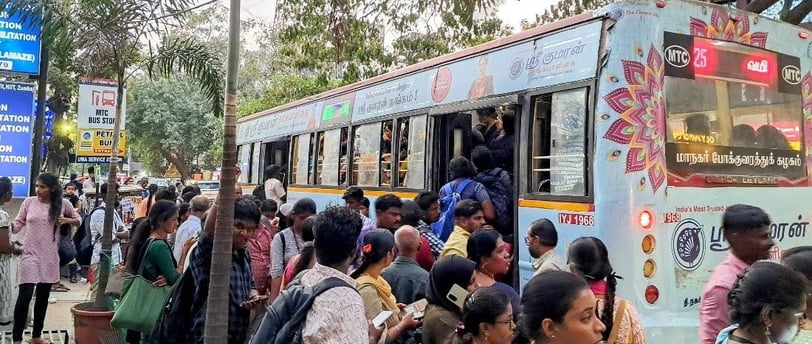Public Transport in India: Challenges, Developments, and Future Prospects
Public transport in India is a lifeline for millions, providing affordable and essential mobility across urban and rural areas. With a vast population and rapid urbanization, India faces challenges in managing congestion, infrastructure development, and service efficiency. However, significant investments in metro rail, electric buses, and smart mobility solutions are transforming the sector. This article explores the current state of public transportation in India, key challenges, and future opportunities. Current State of Public Transport India has a diverse and evolving public transport system that includes multiple modes of travel: Indian Railways: One of the largest railway networks in the world, Indian Railways provides long-distance and suburban train services, catering to millions of passengers daily. Metro Rail Systems: Metro networks in cities like Delhi, Mumbai, Bengaluru, Chennai, and Kolkata have revolutionized urban commuting, with more expansions underway. Buses and Bus Rapid Transit (BRT): Public buses remain the primary mode of transport in most cities, with states like Maharashtra, Karnataka, and Tamil Nadu operating large fleets. BRT systems, like in Ahmedabad and Pune, aim to improve urban mobility. Auto-Rickshaws and Shared Mobility: Auto-rickshaws, cycle rickshaws, and shared taxis provide last-mile connectivity and are a crucial part of the transport network. Ride-Hailing Services: Companies like Ola and Uber have integrated app-based transport solutions, offering convenience alongside traditional taxis. Water Transport: Cities like Kochi and Mumbai are developing water-based transport networks to ease road congestion. Challenges Facing Public Transport in India Despite its scale and importance, India’s public transport system faces several challenges: Overcrowding and Infrastructure Strain: Metro trains, buses, and rail services often operate beyond capacity, leading to discomfort and delays. Traffic Congestion and Pollution: Rapid urbanization and increasing private vehicle use contribute to severe congestion and air pollution in major cities. Aging Rail and Bus Fleets: Many state-run buses and railway coaches require urgent modernization and maintenance. Last-Mile Connectivity Issues: A lack of seamless integration between different modes of transport affects accessibility and efficiency. Limited Public Transport in Rural Areas: Many villages and small towns still lack adequate and reliable public transport options. Safety and Accessibility Concerns: Women’s safety, disabled-friendly infrastructure, and pedestrian facilities need further improvement. Future Prospects and Developments The Indian government and private sector are making significant efforts to modernize and expand public transport infrastructure: Expansion of Metro and Rail Networks: New metro projects and suburban rail expansions are underway in cities like Pune, Nagpur, and Hyderabad. Electrification and Green Transport: Adoption of electric buses and trains aims to reduce emissions and promote sustainability. Smart Mobility and Digital Integration: Unified ticketing systems, mobile payment options, and real-time tracking enhance passenger convenience. High-Speed Rail (Bullet Train Project): The Mumbai-Ahmedabad bullet train project is expected to revolutionize intercity travel in India. Public-Private Partnerships (PPP): Collaborations between the government and private players are helping improve service quality and efficiency. Focus on Non-Motorized Transport: Cities are promoting cycling lanes, pedestrian-friendly zones, and shared mobility solutions to reduce traffic congestion. Conclusion Public transport in India is evolving rapidly, with massive investments in metro rail, electric buses, and high-speed rail. While challenges such as congestion, outdated infrastructure, and safety remain, continued government initiatives and technological advancements are paving the way for a more efficient, sustainable, and inclusive transport system. By enhancing connectivity, affordability, and sustainability, India can build a public transport network that meets the needs of its growing population and urban centers.
3/29/20251 min read


My post content
